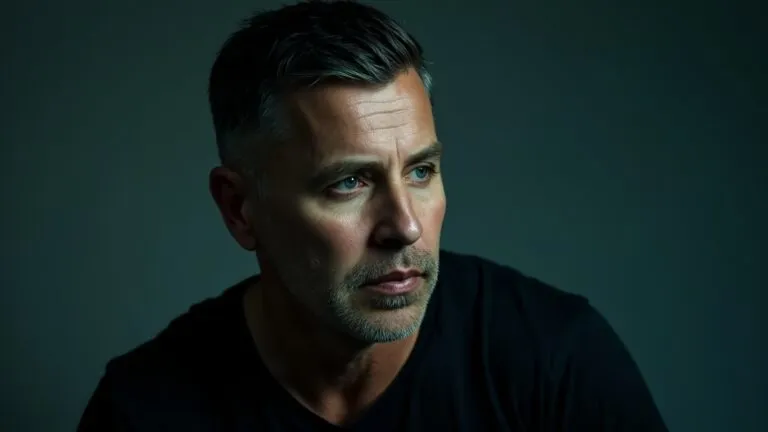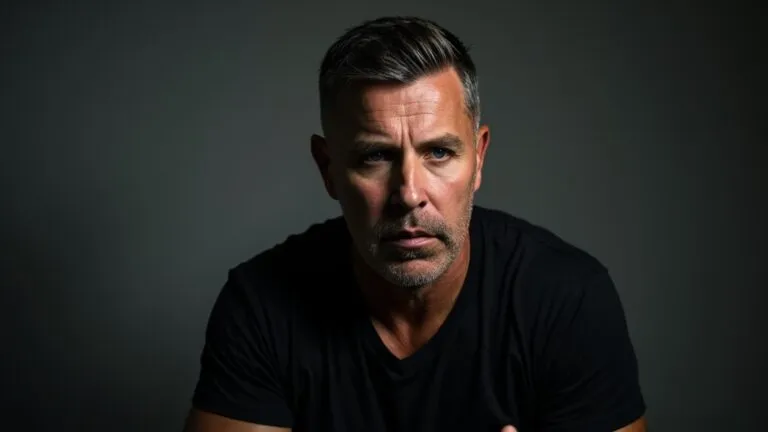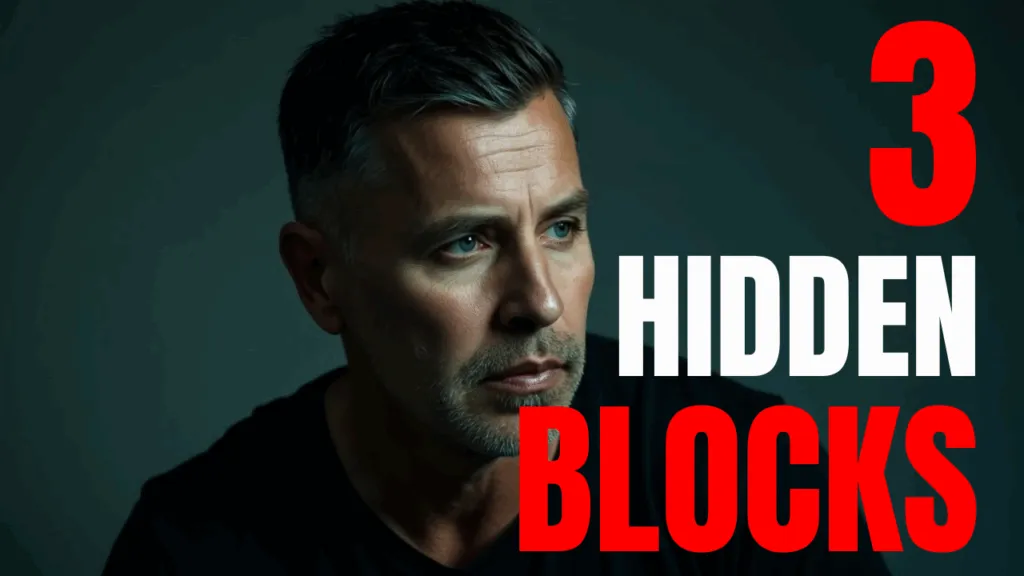
You know how it goes. You set a goal—maybe it’s to get back into exercise, start eating better, stretch more, or finally build that morning routine. You feel clear-headed and motivated when you write it all down.
Then the week happens.
A few days in, the motivation fizzles. You skip a day, maybe two. You lose track. That streak you were proud of breaks… and the habit fades out.
It’s frustrating—not because you’re lazy or don’t care—but because the habits you were trying to build weren’t actually designed for you.
Most people chase habits that look good on paper. But habits don’t stick just because they’re “healthy” or “productive.” They stick when they’re built around how you want to feel—and when they fit your real life.
That’s what this is about.
When your daily actions align with your values, energy, and emotional rhythms, you don’t need to force it. The habit settles in naturally. It doesn’t feel like starting over every Monday. It just becomes part of who you are.
Let me show you what that looks like.
Connect Habits to How You Want to Feel
I’ve always enjoyed working out. Weight training, especially. It gives me structure, energy, and a sense of progress. But even something you love can start to wear thin when the routine gets too repetitive.
For me, it’s not about needing motivation—it’s about keeping it fresh. There are times when going to the gym feels like I’m on autopilot: same sets, same music, same sequence. Over time, it loses its edge.
That’s when I start mixing things up, not by overhauling everything, but by tuning in to what I need that day.
If I’m feeling mentally flat, a walk with the dog helps clear the fog. If my body’s tight from sitting too long, I’ll stretch in front of the TV at night—nothing fancy, just enough to reset.
And I’ve learned not to force myself into routines that don’t fit me. I’m not wired for early mornings. The idea of a 5am club makes me shudder. I’m sharper and stronger in the afternoons, so that’s when I train. It works better. It feels right.
That’s the key. When a habit supports the way you want to feel—whether that’s grounded, energised, focused, or calm—you don’t have to fight yourself to follow through. You actually look forward to it.
That’s what I call a heart-centred habit. It’s not about pushing harder. It’s about finding the version of the habit that already fits your life—and feels good to repeat.
And once you have that, everything else gets easier.
The Fastest Path Is the One That Feels Like You
How much more successful would you be if you just did the things you said you would do?
Think about it. If you ate the way you planned, turned off Netflix when you meant to, followed through on your ideas, stuck to your promises—how much more would you be?
You’d likely feel more energised, more in control, more confident. Your relationships might improve. You’d be calmer with your kids. You’d have more time for the things that matter. The answer, really, is this: much more.
So why don’t we?
Most people assume it’s a habit problem. If they could improve at sticking to routines, everything would fall into place. But if habits were the complete solution, everyone with a journal and a checklist would be thriving in every part of their life.
You’ve probably heard the numbers: it takes 21 days to form a habit. Or 66. Some say up to 254, depending on how challenging or complex the behaviour is. That’s a long time to keep pushing through something that doesn’t feel like you.
But here’s the difference: heart-centred habits don’t take that long. They stick faster. They come with less resistance. And they’re far more likely to last—because they’re built from the inside out.
A heart-centred habit lines up with how you want to feel and who you want to become. You’re not doing it just because you think you should. You’re doing it because it fits. Because it gives something back.
That’s the shift—falling in love with the process, not just chasing the prize. It’s the difference between dragging yourself through another “routine” and creating something that feels meaningful, energising, even comforting.
I once worked with a woman who felt guilty for not sticking to morning journaling. She believed it would help her feel more grounded, more focused—but every day, she found herself skipping it. Not because she didn’t care, but because it didn’t match her rhythm.
So we stripped it back. What she really wanted wasn’t journaling—it was calm. Space before the day took over. So we changed the habit. She sat with her coffee for two quiet minutes. No phone. No notebook. Just stillness.
And it stuck. Not because it was perfectly designed. Not because it was trendy. But because it felt like her. It gave her what she needed.
That’s what happens when a habit aligns with your values and emotional rhythm. The resistance drops away. The habit settles in quickly—sometimes within days—because you’re not forcing it. You’re being pulled toward it.
That’s the real shortcut. Not more discipline. Just less friction.
When the habit feels like a natural extension of who you are, it doesn’t drain you. It fuels you. And once that switch flips, the change happens faster than you think.
What High Performers Know That Most People Miss
You don’t need to be a celebrity or elite athlete to build habits that stick. But studying how they structure their days offers a valuable insight: it’s not raw discipline that keeps them consistent—it’s alignment with who they are and what they value.
Take Ash Barty. After stepping away from tennis at a high level, she returned not for titles, but because she’d rediscovered what mattered most—balance, calm, family and being true to herself. Her training wasn’t about chasing rankings. It became a ritual rooted in values. And that grounded sense of purpose sharpened her performance on court.
Or consider Serena Williams. She didn’t just train hard—she trained with intent. For her, practice became a reset valve, a container for focus amid chaos. It wasn’t only about medals. It was a ritual—a daily alignment of mind and body with her larger story.
And here’s something I learned from Jim Rohn, the mindset coach who worked with top performers: every craft has its essence. The key is to identify one master habit—a ritual that captures that essence. That staple ritual—the thing you do daily—is your anchor. It’s not a trend or technique. It’s a simple, value-driven action that becomes central to everything else.
For athletes, that might be a mental prep routine before training. For entrepreneurs, a morning reflection with a notebook. For parents, a nightly check-in with loved ones may be beneficial. But it all comes back to one habit that aligns with the heart of what they do.
This “master habit” becomes more than a movement or a task. It becomes a part of their identity. And it sticks—not because they have more willpower, but because it fits who they are at their best.
That’s what high performers understand—that consistent change emerges when a single habit is lined up with something real and meaningful inside them.
You don’t have to train like Ash Barty or Serena Williams. But you can find your own master habit—your essence—and shape everything else around it. And when you do, consistency follows naturally.
Start Small: Build One Heart-Centred Habit This Week
Let’s bring this down to earth.
You don’t need to change your whole routine. You don’t need a new app or a colour-coded tracker. All you need is one small action—something that feels right, that lines up with what matters to you.
Start by asking yourself: What do I want to feel more of right now?
It could be calm. Or energy. Or connection. Whatever comes up, trust it.
Next, think about something simple you could do each day to help you feel that way. If it’s calm you’re after, maybe it’s two minutes of quiet before the kids wake up—or a moment with your coffee and no screens. If it’s energy, it might be a short walk or a quick dance in the kitchen. If it’s a connection, it could be a message to a friend or an increase in eye contact while talking to your partner.
The key is to make it real. Not ideal. You don’t need to commit to 30 minutes. You don’t even need a perfect streak. Just something you can return to—something that makes you feel more like yourself.
Start small. Show up once a day. Let it settle in.
When a habit feels like a natural expression of your values, you don’t have to force it. It just fits. It clicks into place faster than expected, because it’s not something you’re doing to become someone else. It’s something you do because it feels like you.
That’s the start of building a life that runs on alignment, not pressure.
And that one habit? That’s more than enough for now.
Conclusion: The Habit That Changes Everything
Most people never give themselves a real chance, not because they don’t care, but because they’ve been taught to build habits the wrong way.
They chase discipline. They chase structure. They chase someone else’s routine.
But when you stop chasing and start choosing—when your habits are built around what matters to you—everything changes. Fast.
A heart-centred habit has two parts:
- You fall in love with the process, not just the prize.
- And you build around one master habit—something simple, consistent, and deeply connected to your identity.
But neither of those pieces will work without a foundation.
That foundation is a values-driven vision—a clear inner picture of who you want to be—and the removal of internal resistance.
That means letting go of the stuck emotional loops. Releasing the guilt, fear, shame, and limiting beliefs that quietly sabotage change.
When those layers are cleared, you stop pushing against yourself. The pathway is open. Your habits have space to land.
And science backs this up: when your habits are built on that kind of alignment, they can form up to five times faster, and deliver five times the sense of fulfilment.
Because you’re not forcing change—you’re finally letting it happen.
So here’s your step:
Pick one habit. Make it small. Make it meaningful. Let it reflect the life you’re ready to live.
You don’t need to change everything. Just build one habit that feels like home. That’s where real change begins.
References
- Adriaanse, M.A., Kroese, F.M., Gillebaart, M. & De Ridder, D.T., 2014. Effortless inhibition: habit mediates the relation between self-control and unhealthy snack consumption. Frontiers in Psychology, 5, p.186.
- Carden, L. & Wood, W., 2018. Habit formation and change. USC Dornsife. Available at: [online].
- Duhigg, C., 2012. The Power of Habit: Why we do what we do in life and business. Random House.
- Fox, K.C.R. et al., 2016. Functional neuroanatomy of meditation: a meta-analysis of functional neuroimaging. arXiv preprint arXiv:1603.06342.
- Lally, P.L. et al., 2009. How are habits formed: Modelling habit formation in the real world. European Journal of Social Psychology.
- MacKenzie, M., 2019. ‘Ashleigh Barty Was on Top of Her Game—Then She Quit’, Glamour, 16 July. Available at: [online].
- Rohn, J., [Variouspub.] Emphasis on identifying the essence of your craft through a single master habit—ritual.
- Szymula, K.P. et al., 2020. Habit learning supported by controlled network dynamics in macaque monkeys. arXiv preprint arXiv:2006.14565.
- Wood, W. & Neal, D., 2016. Healthy through habit: Interventions for initiating & maintaining health behavior change. Behavioral Science & Policy.
- Wendy Wood’s review, 2023. Habit formation and change, USC Dornsife. [PDF].






